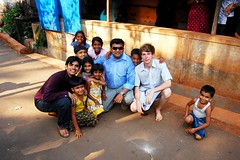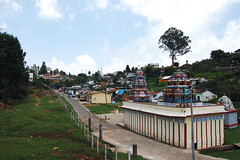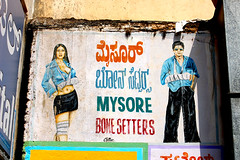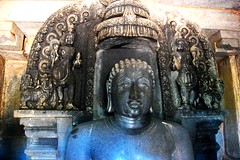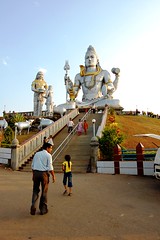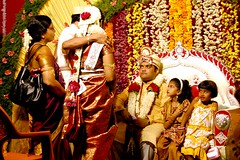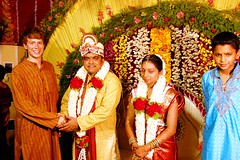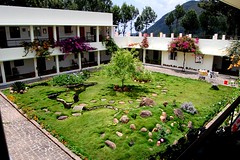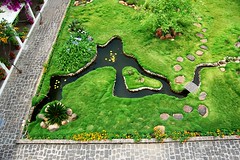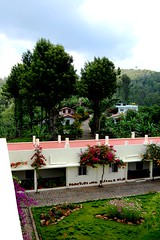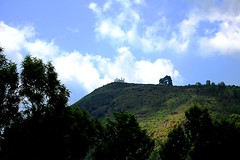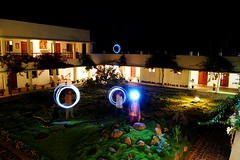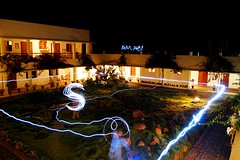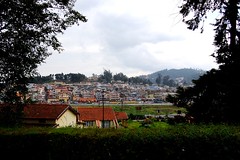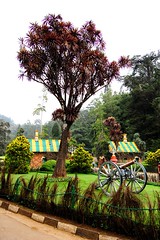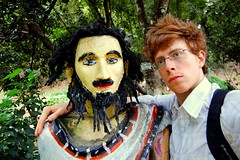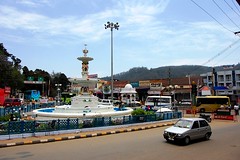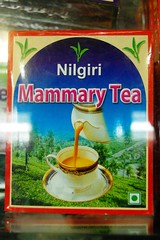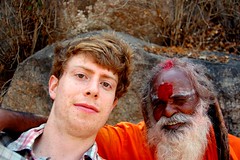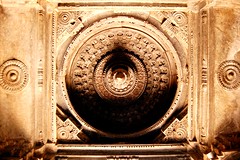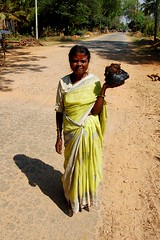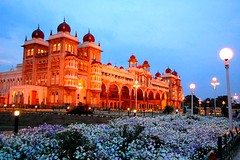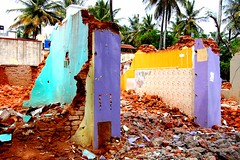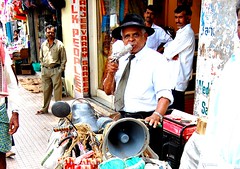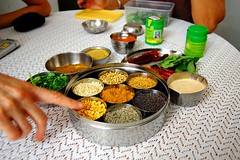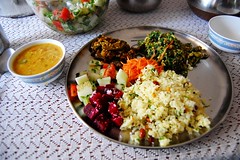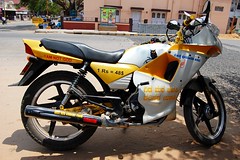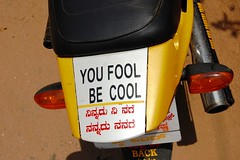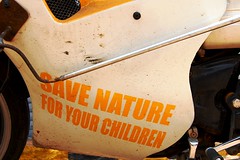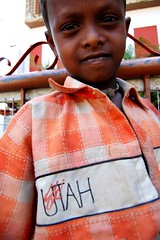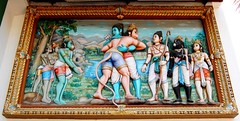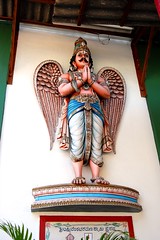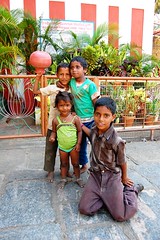Big Thing #1: Chamundi Hill
Saturday morning I climbed Chamundi Hill just south of downtown Mysore. Along the 1,000-step path I passed the bearded
Sannyasi in the picture I posted yesterday and gave him some change, maybe three rupees. When I stopped to take a few pictures with him on the way down, I gave him a ten-rupee note. As I was sitting next to him, he kept insisting in a sort of a hoarse whisper that I give him another ten rupees, which I eventually did. So much for asceticism.
Further up the hill is the
Nandi Bull, which is Big Thing #2.
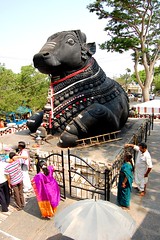
At the top of the hill is
Chamundeswari Temple, where, like all tourist destinations in India, there is no shortage of locals looking to you give you a tour that you didn't ask for and then guilt you into paying them for it.
A few minutes from the temple is a statue of
Mahishasura.
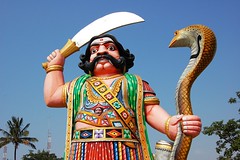
In Hindu mythology, the
Asuras, unlike the benevolent
Devas, are power-seeking gods, sometimes referred to as demons or non-gods. Because of his piety towards
Brahma, Mahishasura was able to weasel his way into being granted immunity to defeat in battle by any man or god. He eventually abused this immunity and the gods had to create
Durga, a female goddess that didn't fit the "man or god" bill, in order to kill him*.
Big Thing #3 is this group of kids that live in a small neighborhood of colorful concrete homes on top of the hill.

I started out taking pictures of a man sitting with a few girls and was quickly swarmed by the rest of the kids from above**.

Yesterday's dinner was Big Thing #4. I ordered something called Channa Bathura from the Chaats section of a restaurant downtown. I had never had it, but I knew Channa was chickpeas and I wanted something beany. Chaat is the word for a breed of snacks that usually includes some kind of fried dough with something flavorful either inside it, to dip it in, poured on it or any combination of the three.
So, the name of this dish didn't say anything about
Puri, but it ended up including some:
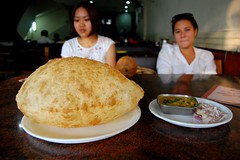
In fact, it was mostly Puri, with a small side of Channa curry to dip it in.
Here it is held up for head-size comparison and with the sun beaming through its greasy translucence:

Delicious.
*Check out the
Wikipedia link to Durga for a great painting of her battling Mahisashura as he pops out of the neck of a decapitated bull.
**As in from the picture above. The swarming did not happen from above. That would be terrifying.
